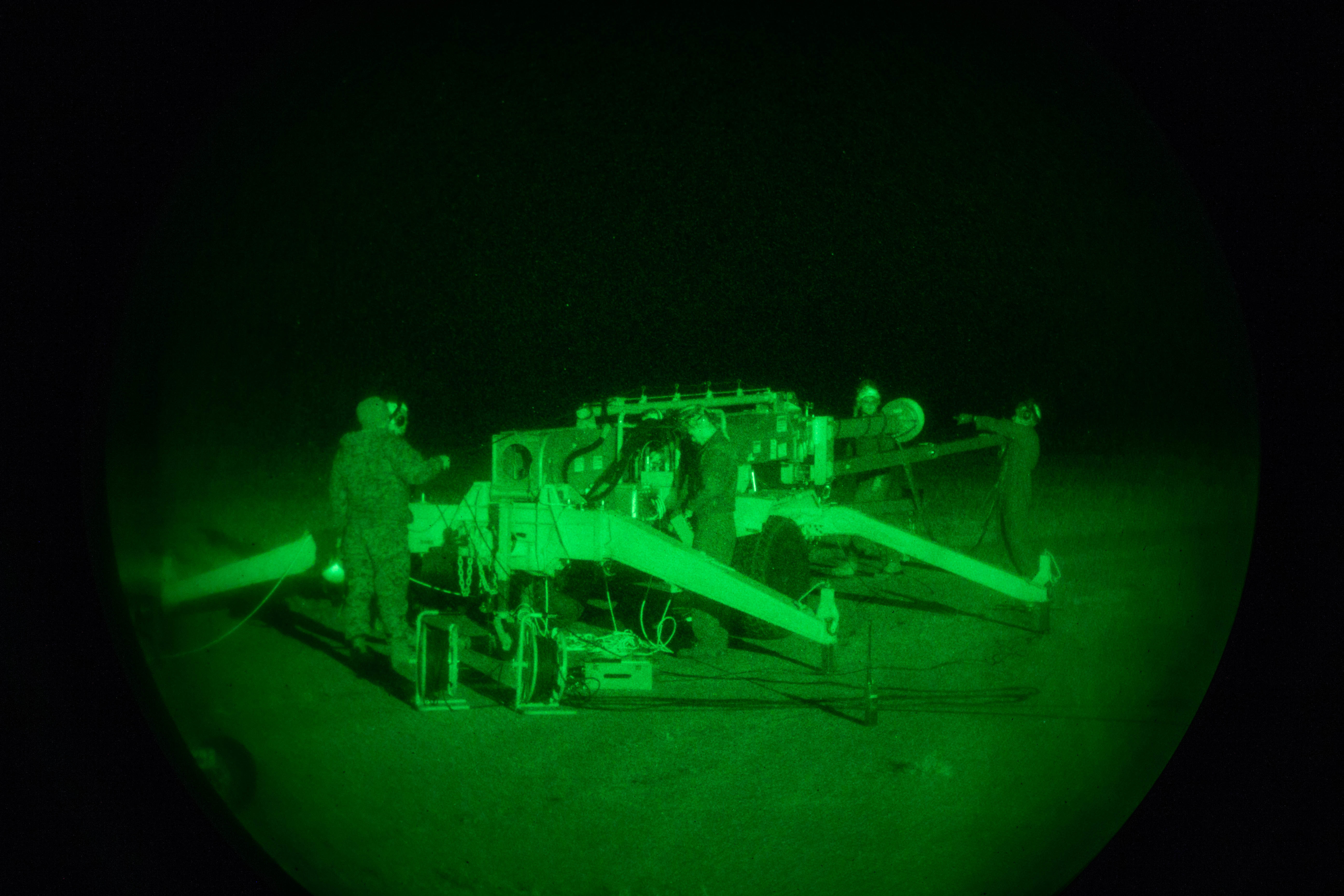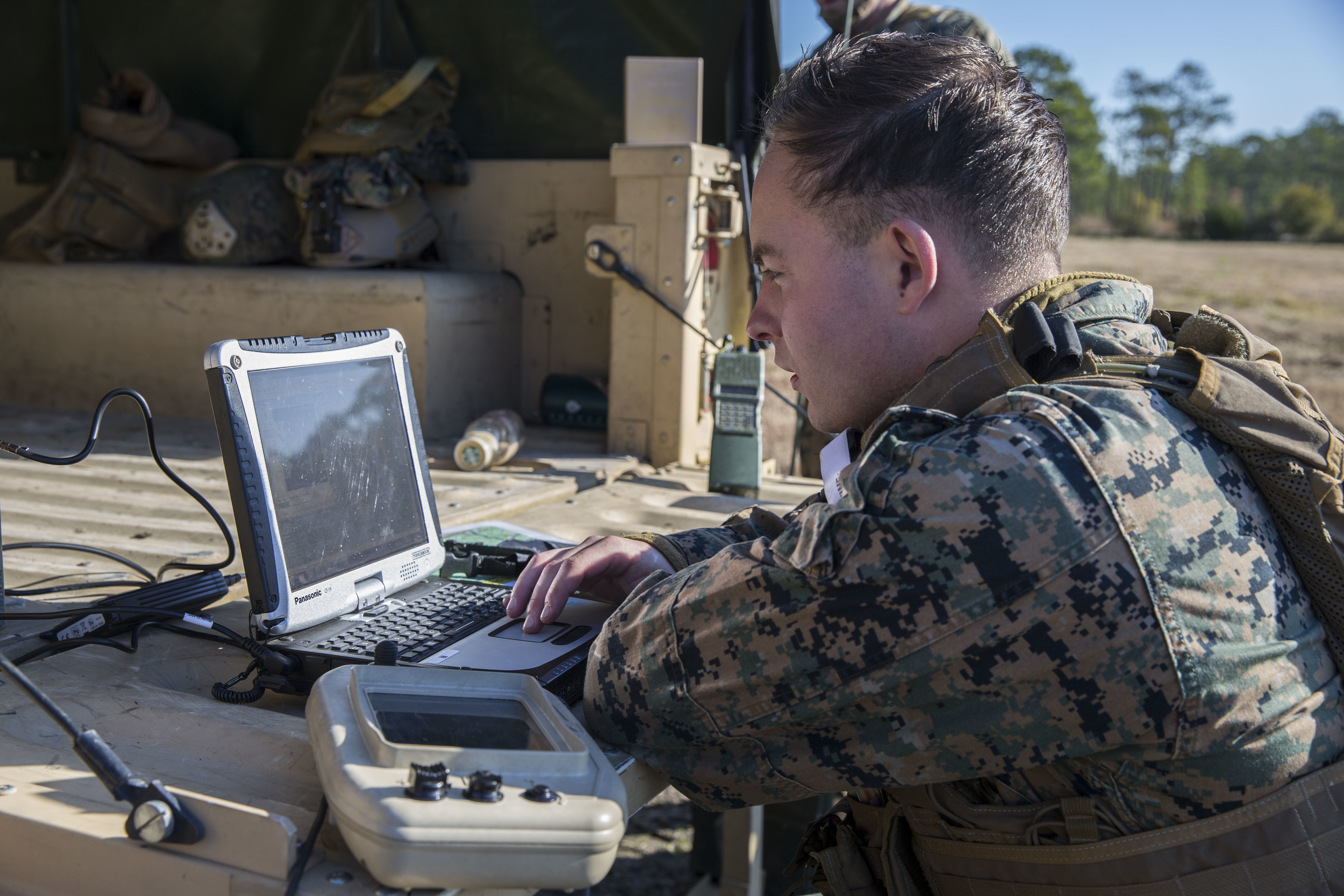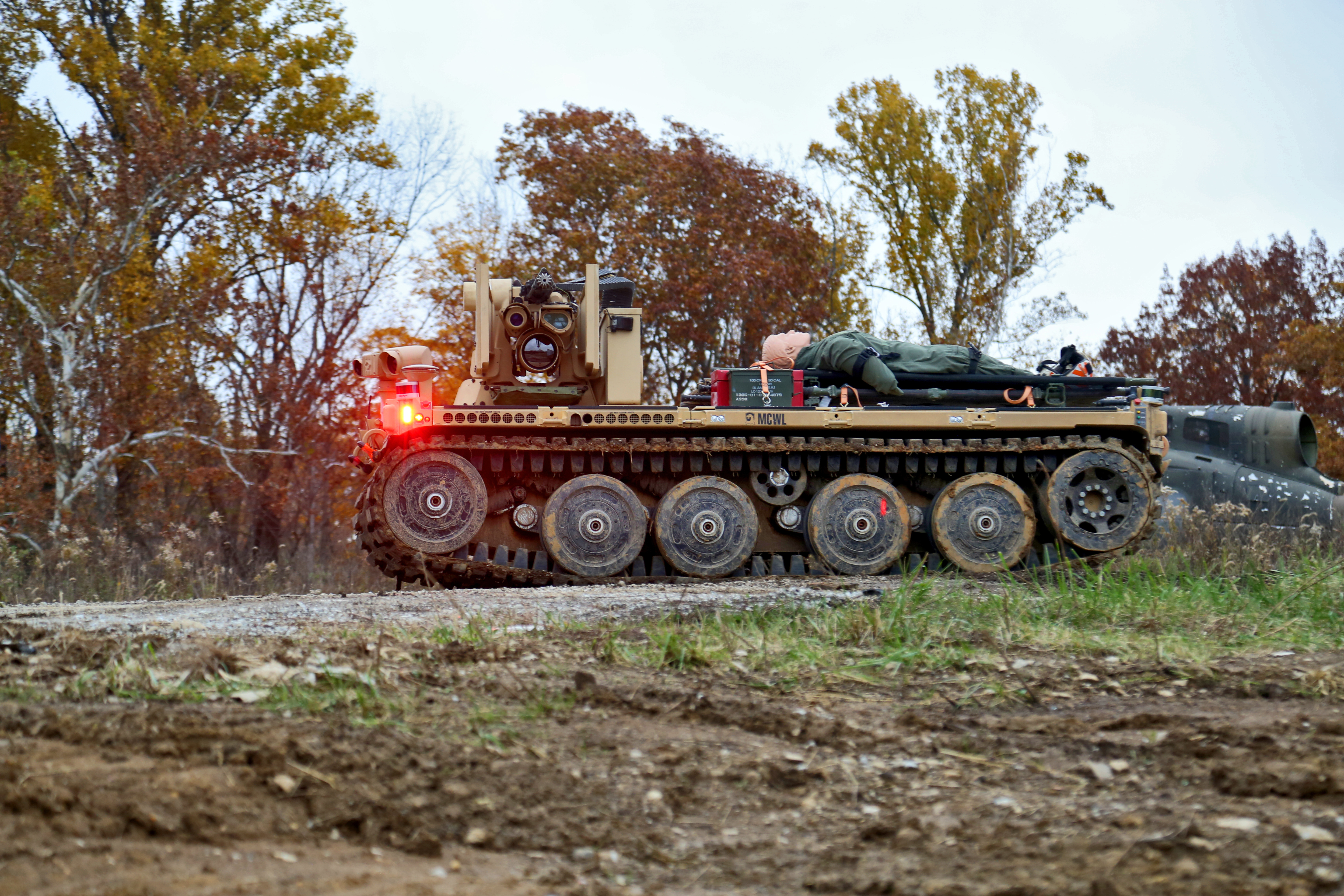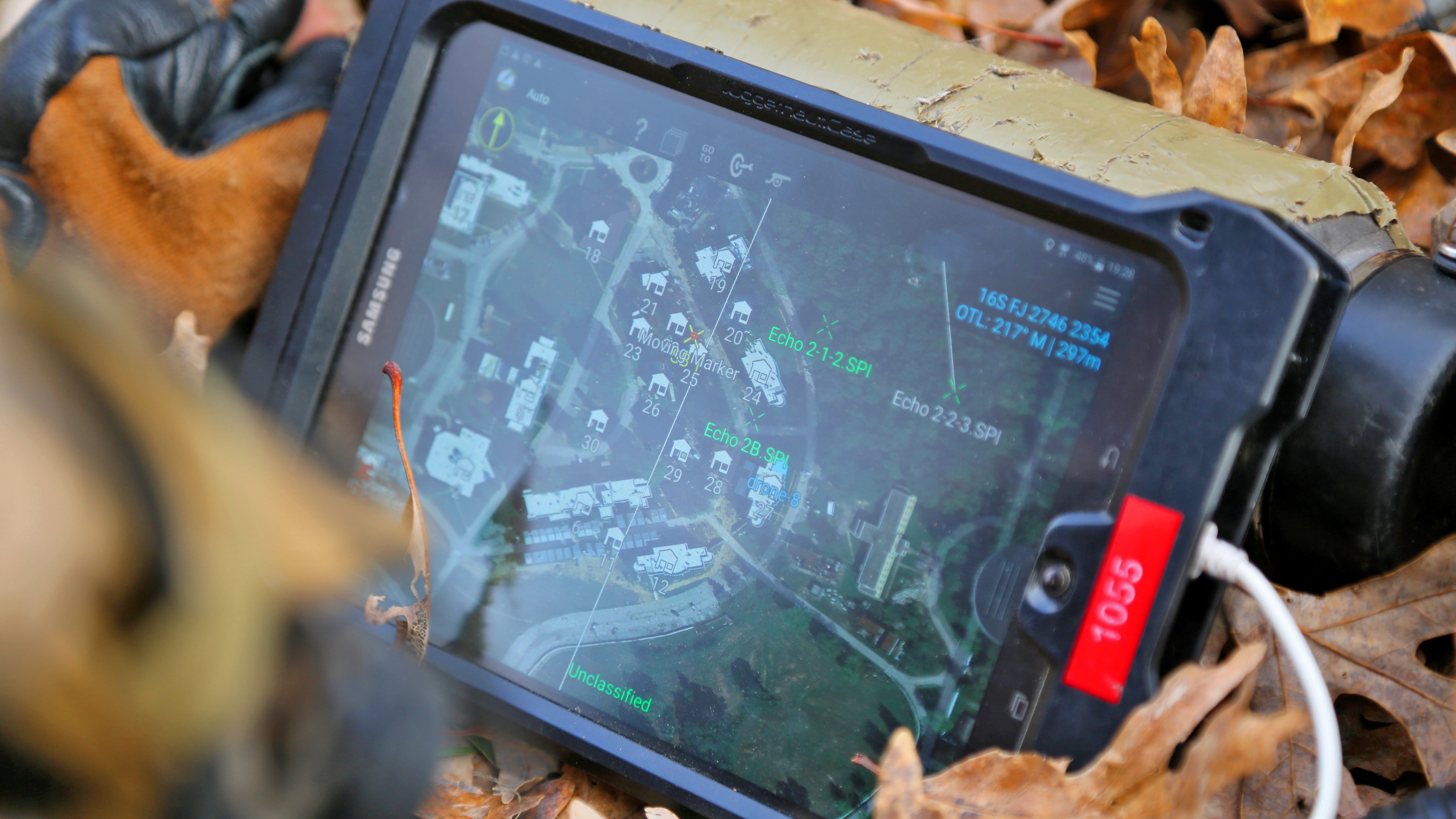
The commandant of the Marine Corps said the service needs to make some big changes in a few short years to stay ahead of China’s growing military capability, but one of the biggest hurdles he sees is a lack of trust in the new unmanned and artificial intelligence systems he wants to invest in.
Gen. David Berger envisions a Marine Corps that leverages AI to shorten the sensor-to-shooter cycle and quickly take out adversaries that could threaten Marine forces. He envisions a self-updating logistics system that knows where the adversary is and can find new ways to route supplies to Marines. He envisions unmanned vehicles moving supplies and even perhaps taking on medevac missions. But all this relies on Marines trusting the unmanned and AI tools he buys them, and Berger said that trust isn’t there just yet.
“In the same way that a squad leader has to trust his or her Marines, the squad leader’s going to have to learn to trust the machine. Trust. In some instances today, I would offer we don’t trust the machine,” Berger said while speaking at the National Defense Industrial Association’s annual expeditionary warfare conference.
“We have programs right now, capabilities right now that allow for fully automatic processing of sensor-to-shooter targeting, but we don’t trust the data. And we still ensure that there’s human intervention at every [step in the process]. And, of course, with each intervention by humans we’re adding more time, more opportunities for mistakes to happen, time we’re not going to have when an adversary’s targeting our network,” he continued.
“We have the ability for a quicker targeting cycle, but we don’t trust the process.”
He said he read a study recently where one group was given an AI tool and was told it was pre-programmed to do the task at hand, and another group was given the tool and shown how to train it to conduct the mission. Naturally, Berger said, the group involved with training the system had much more confidence in it, whereas the group just given the tool didn’t trust it.
A major issue he’d like industry to help with is, “how do we get technologies into Marines’ hands so that they can not just train with it, they can trust it?”

Berger noted several examples of systems he thinks will be important for a future fight.
“Why couldn’t we use the logistics laydown of something like Amazon, their distribution centers, for our expeditionary basing operations? Why couldn’t we use artificial intelligence to assist us in sifting through the massive amounts of information to provide the Marine decision-maker, the commander, with the targeting information he needs or she needs? Our intel, I think, can be stored, sorted and downloaded from a cloud for our forward-deployed forces. And a control system for all those things could be in a hand-held device the size of our phones, all the way down to the squad leader, since all the forces are going to be distributed. How do we ensure that it’s secure? How much risk are we willing to take? How do we ensure the quality of the data that’s moving around remains clean, all while ensuring we can transmit that information needed when the adversary’s actively trying to deny and degrade our networks?” he said.
Later he added that “we need the concept of the distribution network that’s automated, that’s making decisions for us in real-time. We need that idea, but it needs to be able to survive in a contested environment where an adversary is trying to cut every fiber in that thing to make sure we can’t resupply ourselves.”
That idea of a survivable network infrastructure doesn’t just apply to logistics, he said, but also to command and control. He said a resilient and interoperable command and control architecture would underpin everything the Marines want to do in support of Expeditionary Advance Base Operations (EABO) and Littoral Operations in a Contested Environment (LOCE), and that infrastructure would have to have an AI foundation so it can adapt organically if the adversary takes out a communications node and still get the right information to the right end-user.

“How do you cut downtime on sensor-to-shooter, rely on artificial intelligence, build trust, have resilient other nodes so if they sever any one of them the information’s moving still quickly to who can engage. That’s where we’ve got to get to.”
Berger said “we have got to move at an uncomfortable pace in unmanned systems” and later that “I am convinced, we’re going to go faster than we’re comfortable going for a long time. Almost like riding a bike where it’s at a faster pace almost than you can keep up with. But the alternative is to go slower, and then the adversary just slingshots right off of you.”
For example, Berger has called for unmanned systems in the air, the surface and undersea since he took command in the summer of 2019, but today he said the Marines might have to have uncomfortable conversations about how to get the most out of these unmanned platforms. For example, if the service invests in a large number of cheap unmanned aircraft with potentially short service lives, what happens if a Marine is shot and an unmanned aerial vehicle is nearby but there are no manned aircraft in the area? Can the Marines trust the UAV for a medevac mission, or should the Marine wait for a manned helicopter to fly in?
“We’re headed in an area where we haven’t gone to before, but if you can picture MASH, like the tv show MASH, but there’s no pilot in there but you can get it there faster because there’s more of them, is that worth the trade? It might be, it could be,” the commandant said.
“I believe we have to move aggressively in that direction in order to discover those things, in order to learn those things.”
Berger made clear that the Navy needed to start experimenting with these kinds of unmanned and AI tools now so they can answer these kinds of questions in the coming years, to allow for the Marine Corps to be fully transformed by the end of the decade. Still, as much as Berger is comfortable moving at an uncomfortable pace, lawmakers aren’t completely there yet.

Berger noted in his opening remarks that “we lost time in development and experimentation due to lack of funding for some long-range precision fires capabilities because of trust. And that’s on me, I have to do a better job with key to members on the Hill to reassure them that this is the necessary direction for the future of the Marine Corps. In some cases, they believe we’re moving too fast,” he said.
“In the meantime, I’m asking industry to innovate at speed with us, produce at scale alongside us, iterate from the lessons learned that we have in wargaming and experimentation, all in a fiscally constrained environment.”
Later in the event, he said in response to a USNI News question that the Fiscal Year 2021 budget cycle indicated to him that lawmakers are on board with the general direction the Marine Corps is moving in, and that legislation not only supported some of their spending requests but also specifically praised the Force Design 2030 plan guiding all these changes.
“I believe, in writing and in my own listening, my own read of them, they support the direction we’re going. What they’re concerned about is the oversight to make sure that, especially in the research and development phase of things, we’re not going left and right and left and right and using authorities in the wrong way or in an inappropriate way or in an inefficient way,” he said.
“So I think they support – I know that they support the direction the Marine Corps is going. The faster you go, of course, the more nervous they’re going to be because … it’s challenging for us to keep members informed of all along the way. But we have to move quickly. So this is on me to do a better job with the appropriators, with Congress, to explain how we’re going to have the right oversight mechanisms along the research and development and acquisition phase of things – we’re not running amuck – but keep the support that’s clearly there right now for the speed and the innovation that the Marine Corps’ moving in order to stay ahead.”





